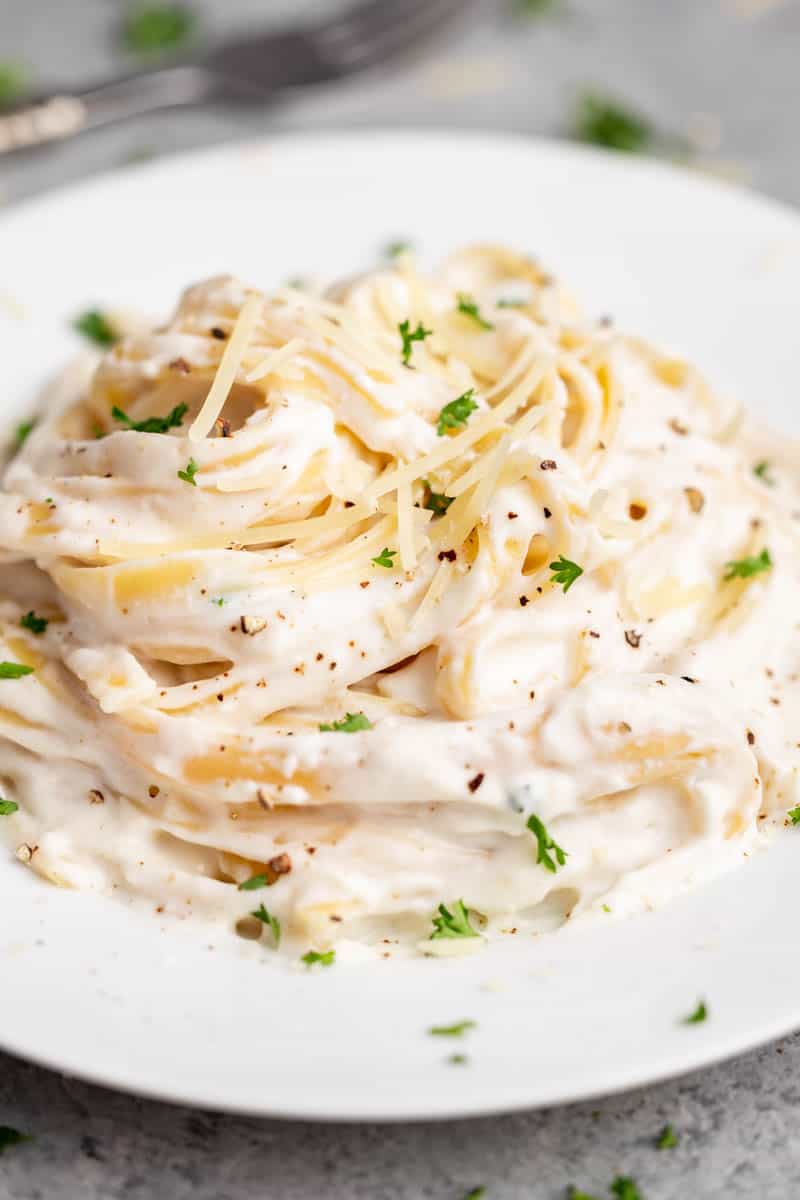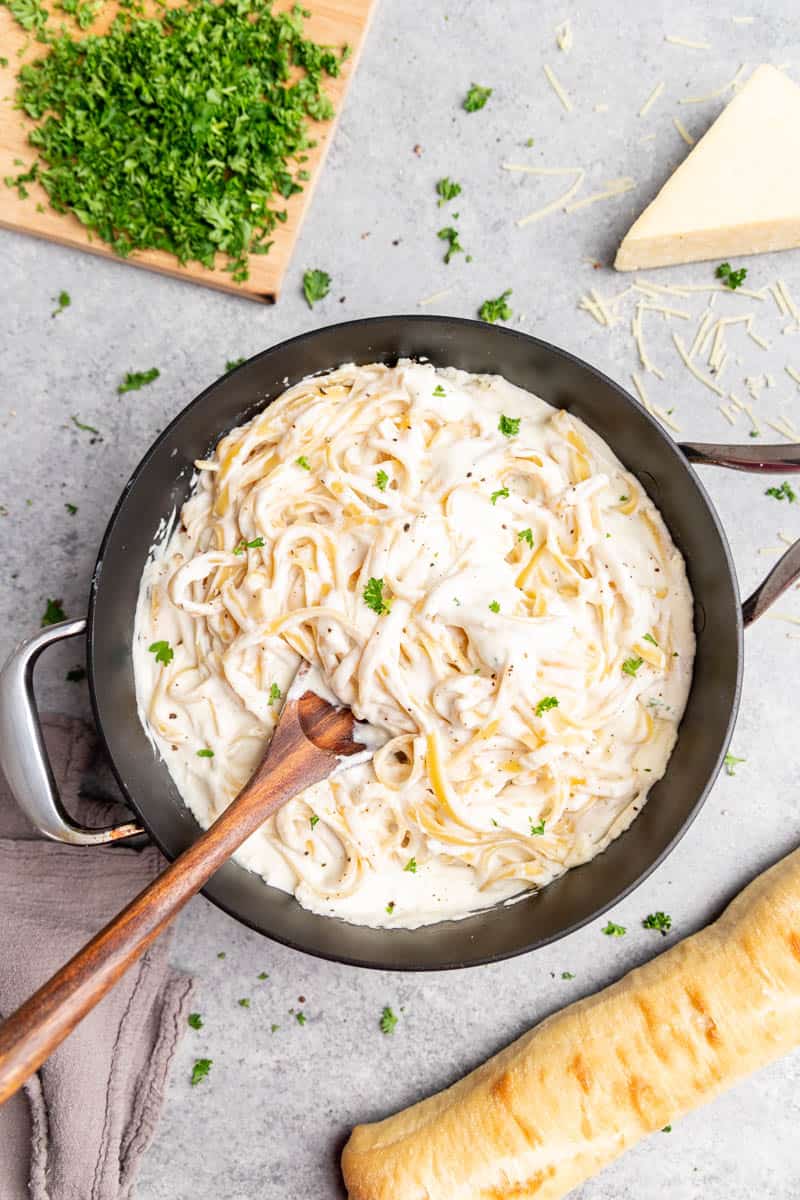
Dive into the creamy comfort of homemade fettuccine alfredo! The perfect blend of cheesy, buttery goodness mixed with perfectly cooked pasta for an easy – but impressive – meal you can whip up in no time.
Bring the charm of Italy to your dinner table with this indulgent fettuccine alfredo. This dish is a beautiful balance of textures and flavors – the smooth and creamy sauce, the tender bite of perfectly cooked fettuccine, and the undeniable flavor of Parmesan cheese. With each spoonful, you’re taken on a flavorful journey, experiencing the mild nuttiness of Parmesan, the slight warmth of garlic, and the subtle richness of butter. Whether you’re planning a romantic dinner for two or a comforting meal for the family, this classic pasta dish is the answer.
Frequently Asked Questions
Absolutely! While fettuccine is traditional, you can substitute it with other types of pasta like spaghetti, penne, or tagliatelle.
No worries, you can make your own half-and-half by mixing equal parts of whole milk and heavy cream.
Yes, you can. Grilled chicken or sautéed shrimp go well with this pasta dish.
Serving Suggestions
Fettuccine alfredo makes a satisfying main dish that pairs well with a light, refreshing side salad or some crusty garlic bread. Finish the meal with a fruit-based dessert like sorbet or fruit tart.
Considering Dairy-Free Alfredo
The characteristically creamy and cheesy nature of the sauce comes from butter, half-and-half, and Parmesan cheese, all of which contribute to its rich flavor and luscious texture. Attempting a dairy-free version may significantly alter these qualities, and while there are many plant-based substitutes available, they might not perfectly mimic the unique properties of their dairy counterparts. Thus, attempting a dairy-free fettuccine alfredo might not yield the same indulgent, comforting result as the traditional recipe.

Storage & Reheating Instructions
While freshly made fettuccine alfredo is best, this dish doesn’t fare well in the freezer due to the cream-based sauce which can separate when thawed and reheated. However, it can be stored in the refrigerator for up to 3 days.
When reheating, do it gently on the stovetop over low heat, adding a small amount of milk or chicken broth to prevent the sauce from drying out. Stir frequently until it’s heated through.
